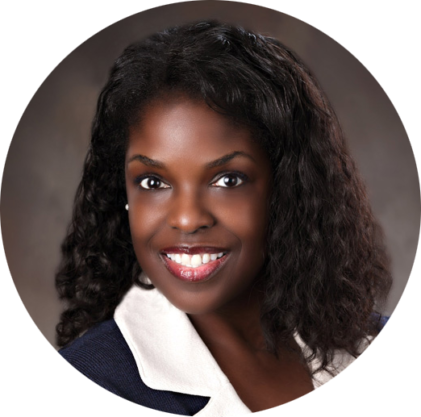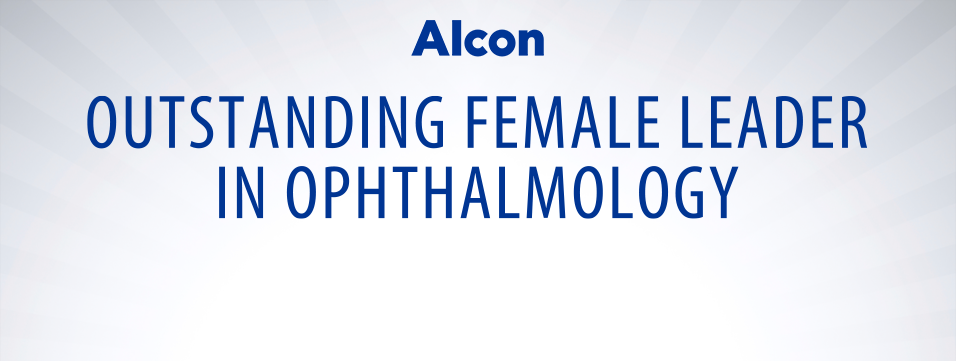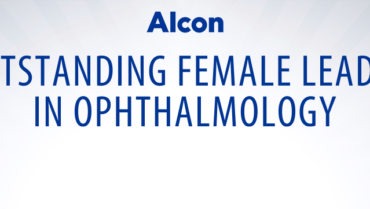
Dr. Bovelle practices at Envision Eye and Laser Center in Glenn Dale, Maryland, and is the director of cornea at Howard University Department of Ophthalmology.
PLEASE SHARE WITH US YOUR BACKGROUND.
As my brother and I were growing up, my parents and their friends were very involved in education. We had a group that met during the summer, and we had extracurricular summer school. We learned how to read the newspaper. We discussed current events. Our parents took other kids and us on field trips to the Smithsonian. We were educated on African American history; we learned about Malcolm X and Phyllis Wheatley, about Martin Luther King and Crispus Attucks. We learned about the great kingdoms in Africa. We colored in the Color Me Brown coloring book. We read Golden Legacy Black history comic books.
There was a lot of racial discrimination in the 1970s, but my parents were committed to fighting against it. There was an understanding that we came from greatness, so therefore greatness was expected of us. This concept is something that is with me every day because it was instilled in me by my parents. It was not enough to get a job and make money. We were expected to become productive members of society and to contribute goodness to the world.
I was lucky in that my role models, our neighbors, were already doing this, and many of these people were like me. In elementary school, I was often asked what I wanted to be when I grew up. There was an expectation that I think about doing something, being someone.
I graduated from the Charles R. Drew/UCLA Medical Education Program. This was my first choice because the first 2 years were spent at UCLA in Westwood for didactics. The last 2 clinical years were spent at Martin Luther King Hospital in Compton. It was the best of both worlds: excellence in academics and excellence in clinical training. The mission of the school also resonated with me: “To serve the underserved.” Wellesley College, my undergraduate alma mater, had a similar motto: “Not to be served, but to serve.”
My patients often ask me what made me decide to become an ophthalmologist. I get excited about my profession each time I answer that question. I first became interested in ophthalmology at the end of the second year of medical school, when we were taking our physical diagnostic classes and learning how to use diagnostic instruments such as the stethoscope, the ophthalmoscope, and the otoscope and how to do physical examinations.
When I first looked into the eye and saw the retina with the ophthalmoscope, I was stunned. I could not believe I was seeing inside the human body in its pristine state. I loved that I could see inside the body and that it was untouched by my instruments. I felt that I had discovered a new world!
I was excited that ophthalmology is both a surgical and a medical field. When I discussed this with friends, they said that it would be difficult for me to get a residency in ophthalmology because it was highly competitive, I had not yet done any research in ophthalmology, and it was reserved for people who did not look like me. For some reason, I was undaunted, and I did not take no for an answer.
I wanted to make sure that I would enjoy ophthalmology, so I contacted the Ophthalmology Department at Howard University and asked if I could do an externship there. Claude L. Cowan Jr, MD, who was Chairman of the Ophthalmology Section at that time, allowed me to attend clinic and surgery along with the residents and medical students learning ophthalmology. Dr. Cowan also had me present cases. I specifically remember presenting on diabetes and sickle cell anemia during grand rounds. It was a wonderful experience, and it confirmed that I wanted to pursue an ophthalmic residency.
In my third year, when I expressed interest in ophthalmology, the academic counselor suggested that I speak with one of the UCLA ophthalmologists who was in private practice. I headed off to Beverly Hills to meet the ophthalmologist. When I got to the building, it was huge, with marble floors and brass so shiny I could see myself. I felt intimidated when I walked into the doctor’s office. There was dark mahogany all over the place, and for a moment I thought, wow, maybe everyone was right. Maybe I would not be able to get a residency in ophthalmology.
However, I quickly regained my senses. I contacted the Ophthalmology Department at Martin Luther King Medical Center, and the ophthalmologists there bent over backwards to help me. In addition to doing an official rotation, I was able to participate in research projects because I had fantastic mentors there, including M. Roy Wilson, MD; Richard Casey, MD; and Richard Baker, MD. I followed their advice to the letter. I applied to as many ophthalmology positions as I could afford and ended up getting more than 25 interviews.
When I matched at the Yale University Ophthalmology Program, I was ecstatic and surprised. After my initial elation wore off, however, I realized that in 1993 I would be only the third Black resident in the history of the Yale program. The first one was in the 1970s, the second in the 1980s, and apparently I was to be the one for the 1990s. That was intimidating, but I prepared and was undaunted. I completed my internship in Baltimore, and the following year I started my ophthalmic residency.
Today, I have a diverse practice with patients from all over the world, although my patient population is predominantly African American. I am encouraged because, even in suburban Maryland, the patients tell me how happy they are to have an African American female doctor. Often, they say they didn’t realize that African American female ophthalmologists existed.
WHAT IS THE FOCUS OF YOUR RECENT RESEARCH?
I completed a fellowship in cornea and refractive surgery at the LSU Lions Eye Center in 1997. It is well known that dry eye disease (DED) has a predilection for women. Autoimmune conditions, thyroid disease, and diabetes are responsible for a great deal of poor health in women, including in African Americans and other minorities. Clinically, I enjoy treating the spectrum of DED and neurotrophic keratitis. These patients often feel that their symptoms have been overlooked, affecting their quality of life and vision. Once they understand the possible sequelae of chronic DED, patients become more open to treatment. It is quite gratifying to help these patients and to restore their quality of life.
I am also concerned about cybersecurity in health care. My dedication to patient safety and the fiscal responsibility of associated organizations led me to complete a master’s degree in cybersecurity strategy and information management at George Washington University in 2019. I focus on educating physicians regarding the importance of data security. I am pleased to have created the first cybersecurity continuing medical education activity for the AAO and for several state societies.
Physicians must be educated regarding how to protect themselves from cyberthreats that can be financially detrimental to their practices and their patients. The rapid increase in cyberattacks on health care systems raises concern. As a critical infrastructure sector, the health care system is the most exposed and least protected. The lack of cybersecurity preparedness can result in data breaches and audit failures. These can lead to loss of reputation, fines, loss of patient trust, government compliance issues, lawsuits, patient safety issues, and more. I am dedicated to assisting policy makers regarding health care cybersecurity to try to rectify this situation.
WHAT HAS BEEN YOUR EXPERIENCE COLLABORATING WITH INDUSTRY?
Most recently, for the betterment of ophthalmology and patients, I increased my advocacy for inclusion, diversity, and equity for women and underrepresented minorities. I have found industry to be forward-thinking and collaborative on these efforts.
Joining Ophthalmic World Leaders (OWL) is a wonderful way to become more acquainted with industry. OWL is a unique and vibrant organization. It provides a path for all ophthalmic community stakeholders to work together toward a shared vision of diversity and success. We make each other better. This is fantastic because, ultimately, our patients reap the benefits.
Of course, it makes economic sense to fully leverage the diversity of ophthalmic talent. I will continue to share my perspectives with industry and to work on increasing research within my community. Additionally, the number of women who are principal investigators in clinical trials must be increased.
IN YOUR OPINION, HOW IS THE ROLE OF WOMEN IN OPHTHALMOLOGY EVOLVING?
I appreciate that women are becoming more involved in all aspects of ophthalmology. However, we need more women in leadership positions in academics, private practice, and organized medicine. As women continue to collaborate, this will increase. The more we help each other, the better it will be for each of us.
WHAT HURDLES DO YOU FEEL WOMEN IN HEALTH CARE STILL FACE?
We are a long way from achieving pay equity and realizing parity in leadership positions. Do not be afraid to ask for your worth but know the market trends in your area. Be clear on employer expectations and evaluation points before signing any contract. Do not be afraid to work hard and then advocate for yourself. Give examples of your strong work when asking for a raise or academic appointment.
WHAT ADVICE CAN YOU OFFER TO YOUNG FEMALE OPHTHALMOLOGISTS WHO ARE STILL IN TRAINING OR JUST BEGINNING THEIR CAREERS?
Seek out a mentor. The mentor can be male or female but must be someone with whom you feel comfortable sharing your ideas and goals. Also, the mentor does not have to be at your own institution.
I am passionate about participating in organized medicine because it can provide opportunities for leadership and for acquiring new skills that may be helpful in practice. Find an organization that resonates with you. I consider the Women in Ophthalmology meeting to be one of the best-kept secrets in ophthalmology. I always come away rejuvenated after attending. In a relaxed atmosphere, attendees are exposed to superb academic lectures, new research, and empowerment sessions.
Participating in organized medicine and alumni organizations offers exposure to prospective mentors. Do not be afraid to be yourself; it got you this far and will continue to carry you.
If you are thinking of starting your own practice, please engage a consultant who is familiar with your geographic area. Also, try not to burn bridges as you move about. Finally, please make sure that you have something outside of ophthalmology that brings you joy and take time for that.
CAN YOU PROPOSE A UNIQUE OR CREATIVE IDEA THAT MAY HELP WOMEN IN OPHTHALMIC PRACTICES?
Don’t forget to reach back and offer assistance to women in training and your peers. You may find that they have great ideas. Becoming active in your state’s ophthalmology society allows you to make new contacts, especially if you are new to the area. Also, it is a great idea to meet with women in your area or virtually to discuss interesting cases and practice ideas.
You can organize a small group of three to five women, not necessarily in your practice but in your larger metropolitan community. I was a member of such a group when I first came to Washington. We were in academics, private practice, and government. It was a great forum to share our different experiences. Remember, sometimes new opportunities are not advertised, just shared locally.
Most important, we should all be supportive of each other.
SELECTED PUBLISHED WORKS AND PRESENTATIONS
- Davis SA, Bovelle R, Han G, Kwagyan J. Corneal collagen cross-linking for bacterial infectious keratitis. Cochrane Database Syst Rev. 2020;6(6):CD013001.
- Instigating Change: An Honest Discussion on Race in Ophthalmology Webinar Series. Presented at: Ophthalmic World Leaders; 2020.
- Advice for Ransomware Avoidance. American Academy of Ophthalmology National Webinar; 2019.
- Crucial Steps to Stopping Phishing, Spear-Phishing, and Ransomware. Paper presented at: ASCRS Annual Meeting; San Diego, CA; May 3-7, 2019.
- Bovelle R, Kaufman SC, Thompson HW, Hamano H. Corneal thickness measurements with the Topcon SP-2000P specular microscope and an ultrasound pachymeter. Arch Ophthalmol. 1999;117(7):868-870.
HONORS & AWARDS
- Catalyst Award, Ophthalmic World Leaders | 2020
- AAO Achievement Award | 2020
- Community Education Program | 2007
- Women’s Health Conference | 2006-2007
- Doctors Community Hospital, Lanham, Maryland | 2005
PROFESSIONAL SOCIETY MEMBERSHIPS
- President, Maryland Society of Eye Physicians and Surgeons 2020–2022
- Ophthalmic World Leaders, Board Member | 2020
- Senior Fellow, University of Maryland Center for Health and Homeland Security | 2020
- MedChi Alternate Delegate to American Medical Association 2018–Present
- ASCRS•ASOA Health Information Technology Committee 2018–Present
- Critical Infrastructure Subcommittee, Maryland Cybersecurity Council | 2018–Present
- Maryland Society of Eye Physicians and Surgeons, Councilor to AAO | 2017–Present


